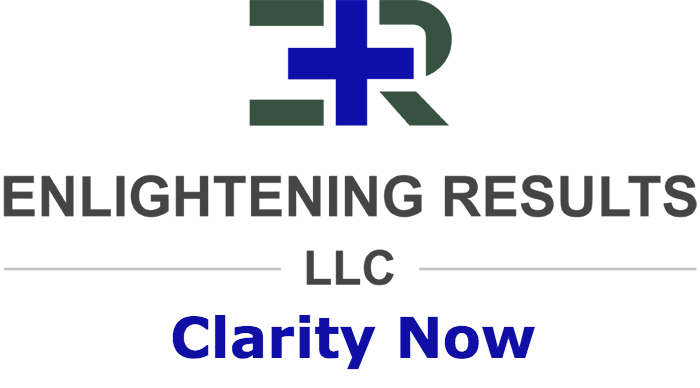The Glaring Omission in Kymriah Drug Approval Press Releases
/Novartis received F.D.A. approval for Kymriah (tisagenlecleucel), as the first CAR-T gene therapy approved in the US for pediatric and young adult patients with relapsed B-cell acute lymphoblastic leukemia (ALL). Kymriah is being hailed as a paradigm and life changing therapy. Clinical studies have shown that within 3 months of treatment, patients achieved overall remission rates of 83%, survival of at least six months by 89%, with a 79% chance of survival of at least a year. These are tremendous clinical feats for patients with limited to no treatment options. The price for the single treatment therapy is $475,000. Novartis is working with the Centers for Medicaid and Medicare Services where patients will only be responsible for payment if they respond after 1 month of treatment. The company has also reported it would provide assistance to those without insurance and the underinsured.
The CEO of Novartis Oncology, Bruno Strigini, said, “We are so proud to be part of this historic moment in cancer treatment and are deeply grateful to our researchers, collaborators, and the patients and families who participated in the Kymriah clinical program(1). The majority of press releases (2-14) reporting the approval all had one glaring omission. Not a single press release formally recognized the importance of the patients that volunteered to participate in the trials. Not a single one expressed gratitude for the dedication of the care partners that committed their time to the success of these trials. Many trials fail to recruit and retain enough patients (15), leading to early termination, delays, or inadequate data for statistical reporting. Considering Kymriah is a treatment geared to a very specific subset population of ALL, it is incredible that these trials were able to accrue and retain the necessary numbers of patients to generate statistically significant findings. Clinical trial participation requires dedication, sacrifice, and an uncanny belief in the unknown. Imagine the degree of mental, physical, emotional, and spiritual duress a parent or guardian experiences in deciding whether their child, who is in the throes of a terminal cancer diagnosis, should participate in a clinical trial. In the cases of pediatric and young adults patients, one parent, if not both, often need to significantly decrease the number of hours they may work, take an unpaid leave of absence, or leave their job permanently to assume the role of care partner for the patient so as to follow trial protocol. One can only imagine the impact on a single parent household. While there were clearly never seen before successes, with many precious lives saved, it wasn’t a miraculous ending for ever patient that was treated. There are also life-threatening sides that come with treatment. Even the success stories may have had many dark moments along the way.
At a time when the healthcare industry is exploring and investing in initiatives to promote patient-centricity, it is important to acknowledge all stakeholders involved in successes such as these. While Kymriah is undoubtedly a groundbreaking approval representative of the epitome of exceptional science, dedication, and innovation, let’s not forget to credit the patients and care partners who made this innovation and approval a reality as well. While researchers may have dedicated years of their careers developing the basic science and pharma may have invested close to a billion dollars to bring this living drug to market, the most invaluable part of Kymriah’s product lifecycle was patients’ volunteering their lives to the development of what’s being hailed as historic breakthrough science.
Resources:
1. Novartis. (2017, Aug 30). Novartis received first ever FDA approval for a CAR-T cell therapy, Kymriah (tisagenlecleucel, CTL019), for children and young adults with B-cell ALL that is refractory or has relapsed at least twice [Press Release]. Retrieved from https://novartis.gcs-web.com/novartis-receives-fda-approval-for-KymriahTM
2. Berkrot, B. (2017, Aug 30). Novartis gene therapy approval signals new cancer treatment era [Press Release]. Retrieved from http://in.reuters.com/article/us-novartis-fda-idINKCN1BA1ZY
3. Cortez, M., Edney, A., &Paton, J. (2017, Aug 30). Breakthrough cancer therapy for dire cases gets FDA approval [Press Release]. Retrieved from https://www.bloomberg.com/news/articles/2017-08-30/breakthrough-genetic-treatment-for-dire-cancers-approved-by-fda
4. The Food and Drug Administration. (2017, Aug 30). FDA approval brings first gene therapy to the United States [Press Release]. Retrieved from https://www.fda.gov/NewsEvents/Newsroom/PressAnnouncements/ucm574058.htm
5. Garde, D. (2017, Aug 30). Pioneering cancer drug, just approved, to cost $475,000- and analysts say it’s a bargain. [Press Release]. Retrieved from https://www.statnews.com/2017/08/30/novartis-car-t-cancer-approved/
6. Glenza, J. (2017, Aug 30). US approves first cancer drug to use patient’s own cells- with a $475,000 price tag [Press Release]. Retrieved from https://www.theguardian.com/us-news/2017/aug/30/cancer-drug-kymriah-leukemia-novartis
7. Grady, D. (2017, Aug 30). FDA approves first gene-altering leukemia treatment, costing $475,000 [Press Release]. Retrieved from https://www.nytimes.com/2017/08/30/health/gene-therapy-cancer.html?mcubz=3
8. Herper, M. (2017, Aug 30). Novartis CEO’s dilemma: Is $475,000 too much for a leukemia breakthrough? Or is it not enough? [Press Release]. Retrieved from https://www.forbes.com/sites/matthewherper/2017/08/30/novartis-ceos-dilemma-is-475000-too-much-for-a-leukemia-breakthrough-or-is-it-not-enough/#772e4a77556e
9. Nedleman, M. (2017, Aug 30). FDA announces first US gene therapy approval for cancer treatment [Press Release]. Retrieved from http://www.cnn.com/2017/08/30/health/fda-first-gene-therapy-leukemia/index.html
10. NPR. (2017, Aug 30). FDA approves first gene therapy for leukemia [Press Release]. Retrieved from http://www.npr.org/sections/health-shots/2017/08/30/547293551/fda-approves-first-gene-therapy-treatment-for-cancer
11. Ramsey, L. (2017, Aug 30). A medical breakthrough that hacks genes to fight cancer just got approved, and it’s the beginning ‘of a big new field of medicine’ [Press Release]. Retrieved from http://www.businessinsider.com/why-the-fda-approved-kymriah-a-car-t-cell-therapy-to-treat-cancer-2017-8
12. Scotti, A. (2017, Aug 31). New cancer drug’s ‘astronomical price’ only affordable for the 1% [Press Release]. Retrieved from http://www.nydailynews.com/life-style/health/new-cancer-drug-astronomical-price-affordable-1-article-1.3458071
13. Smith, M., Goodman, B. (2017, Aug 30). FDA approves first-of-its kind cancer treatment [Press Release]. Retrieved from http://www.webmd.com/cancer/news/20170830/fda-approves-breakthrough-cancer-treatment
14. Univeristy of Pennsylvania. (2017, Aug 30). FDA approves personalized cellular therapy for advanced leukemia developed by University of Pennsylvania and Children’s Hospital of Philadelphia Retrieved from https://www.pennmedicine.org/news/news-releases/2017/august/fda-approves-personalized-cellular-therapy-for-advanced-leukemia
15. Kolata, G. (2017, Aug 30). A cancer conundrum: Too many drug trials, too few patients [Press Release]. Retrieved from https://www.nytimes.com/2017/08/12/health/cancer-drug-trials-encounter-a-problem-too-few-patients.html?mcubz=3

